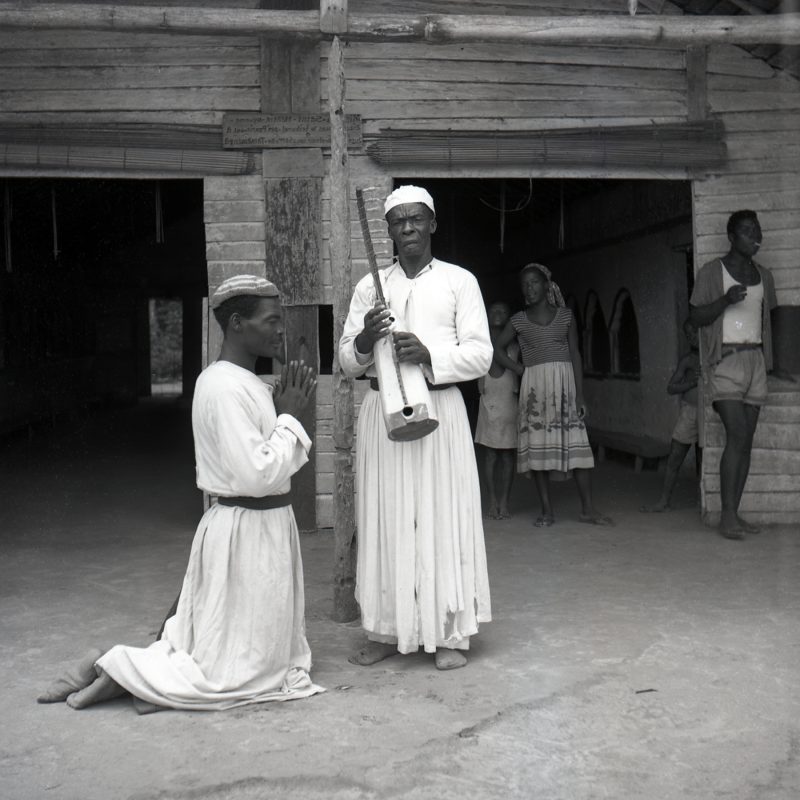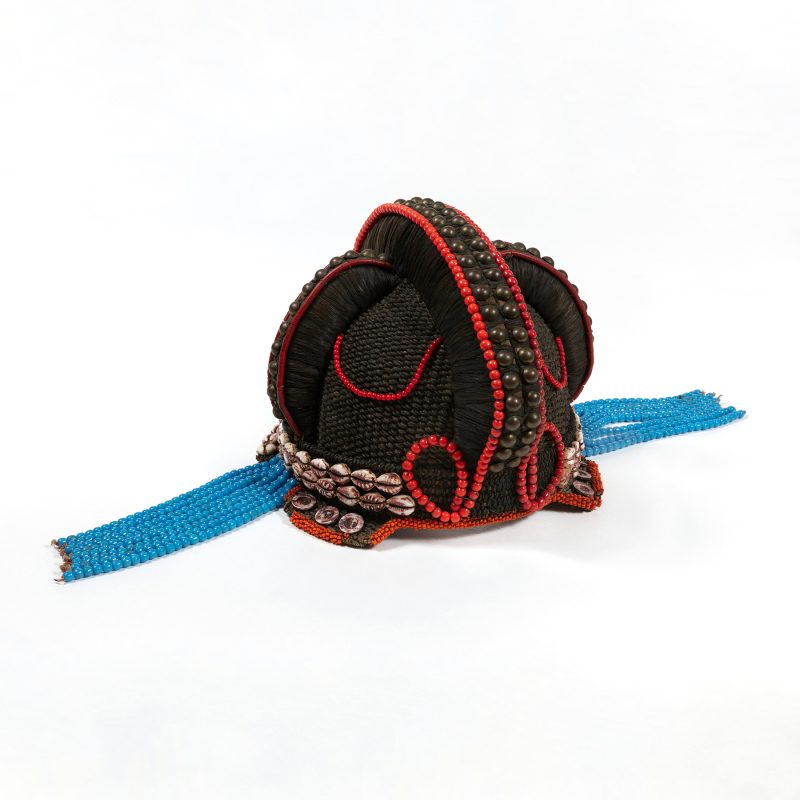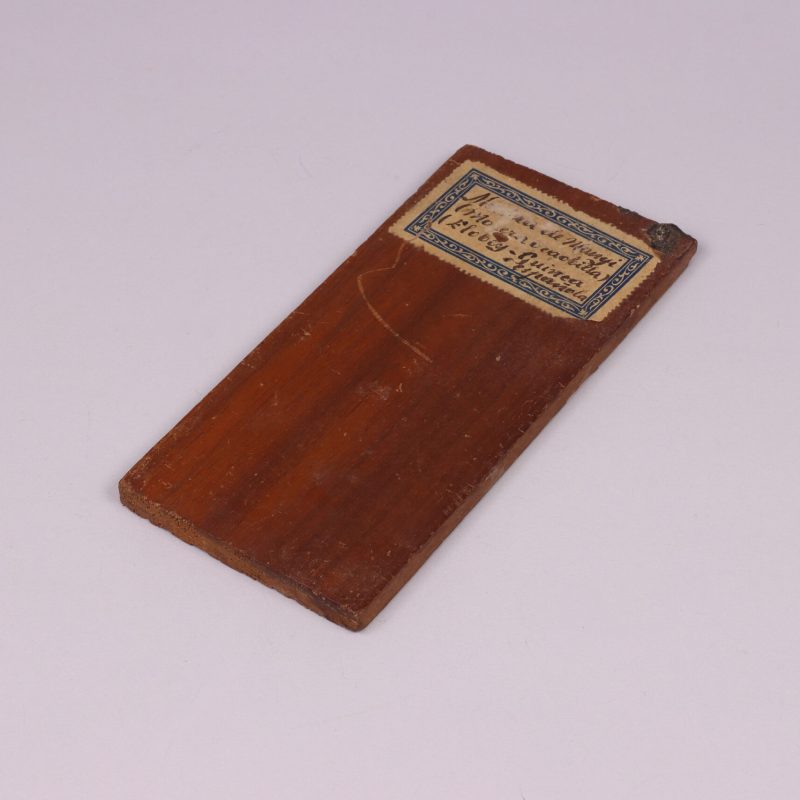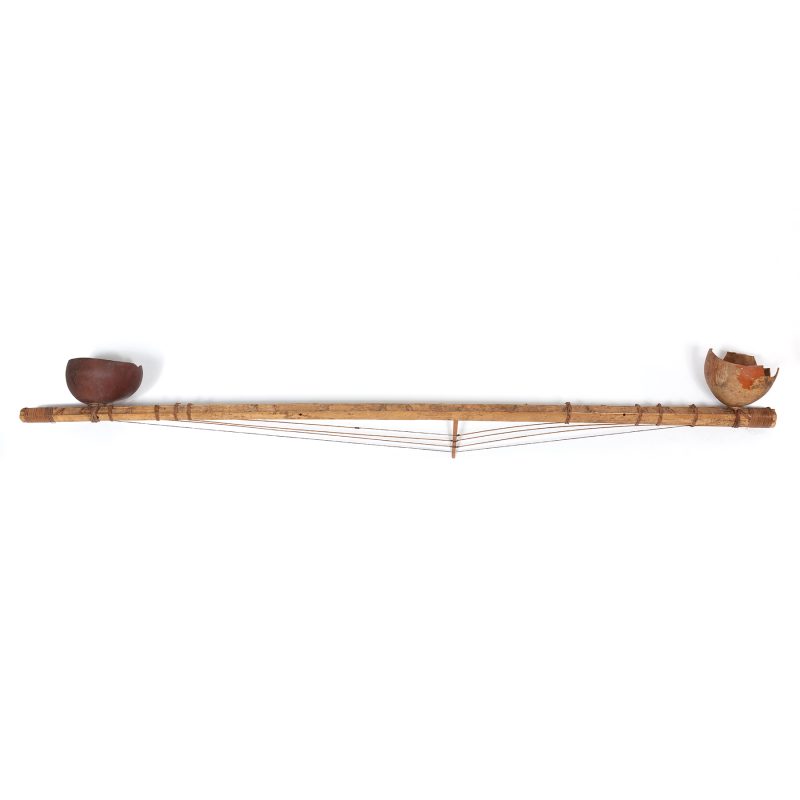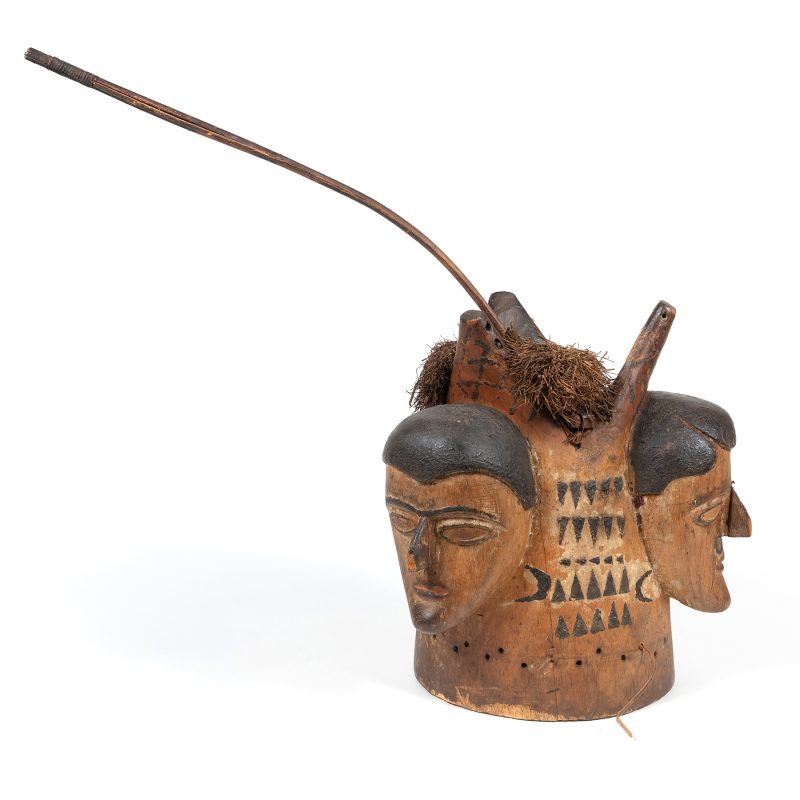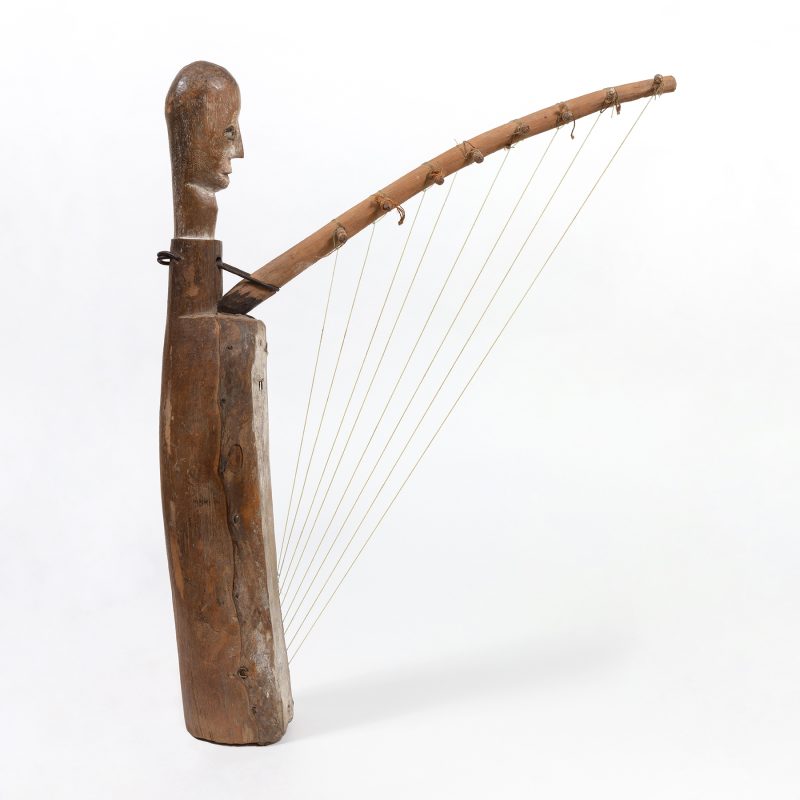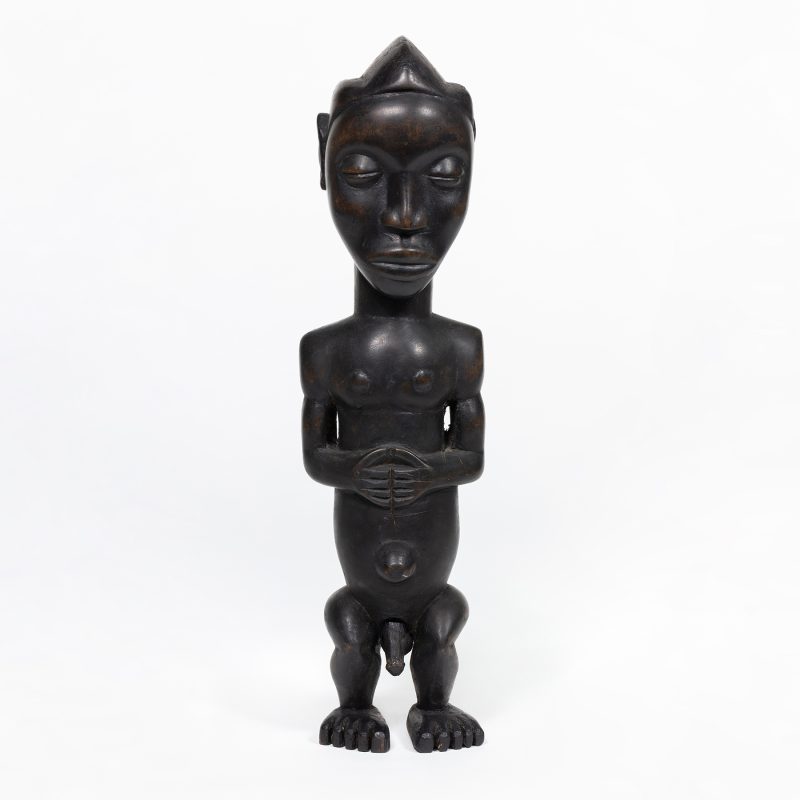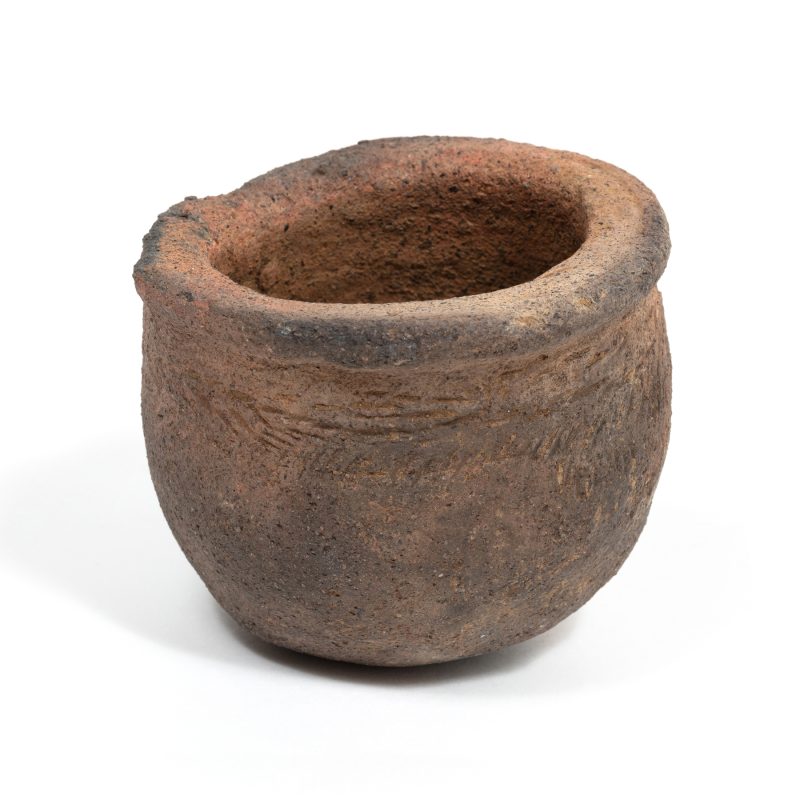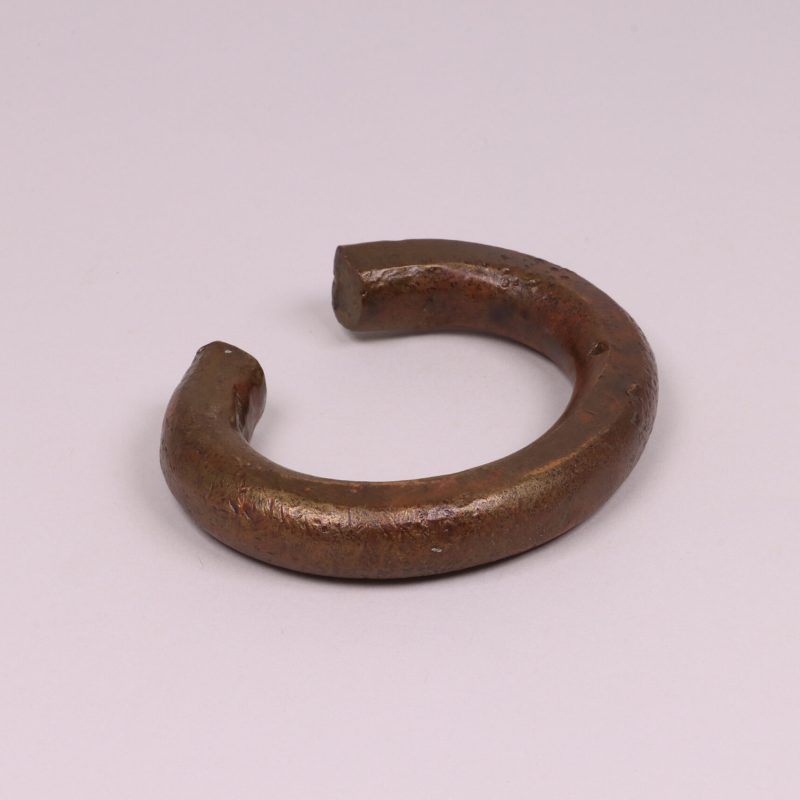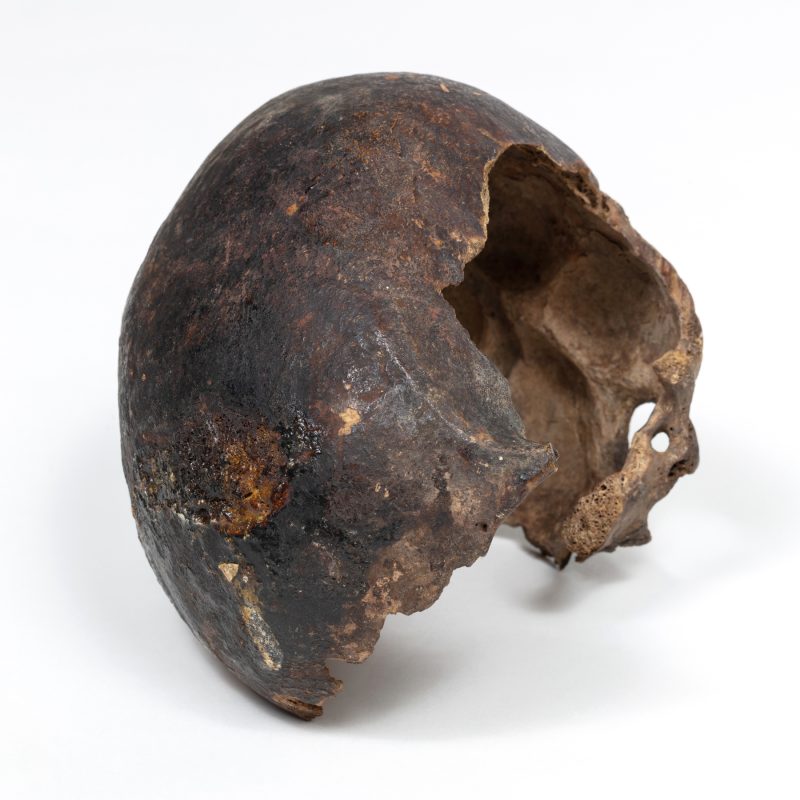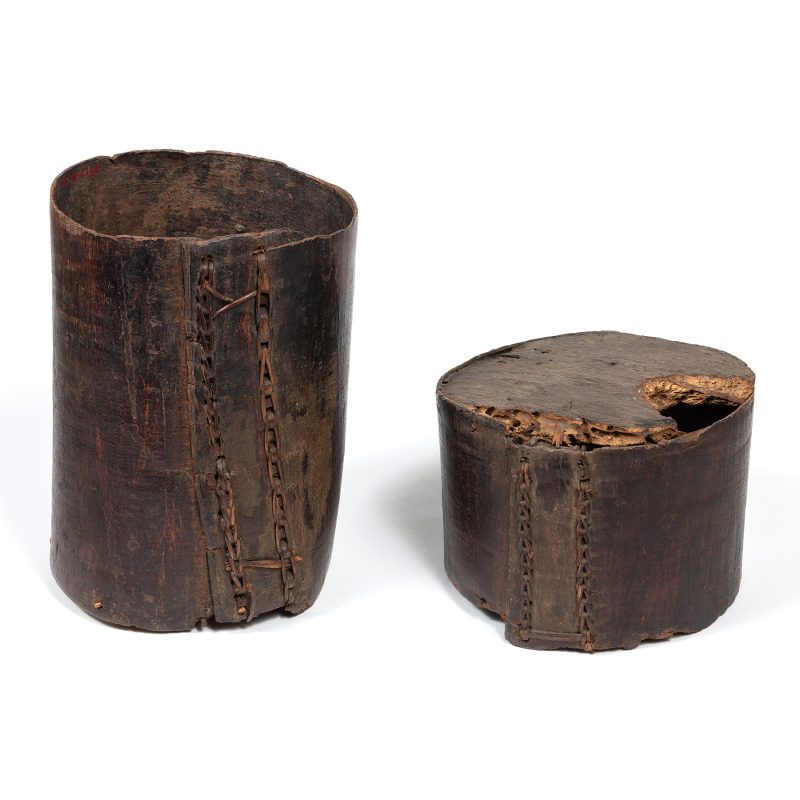Pieces
The collection from Equatorial Guinea held at the Museum of Ethnology and World Cultures consists of a total of 1,105 pieces, accounted for to date (2024). It is a collection of objects of diverse origins, formed mainly from donations made by the Spanish National Research Council (CSIC), as a result of the well-known expedition of the former Institute of African Studies (IDEA) carried out in 1948.
This donation provided an important part of the Guinean artefacts used for the inauguration of the museum, to which would be added those from the different expeditions carried out by the institution between 1957 and 1959.
Also included in the collection were the pieces brought in by Jordi Sabater Pi, who had been a collaborator of the institution since 1952 and curator of the Ikunde Animal Acclimatization and Experimentation Centre (1959–1969), which operated under the auspices of Barcelona City Council.
Other very significant items of the Guinean collection are those represented by the collection of Miguel Núñez de Prado, governor of the former Spanish Guinea between 1925 and 1932, as well as those from the Missionary Sons of the Immaculate Heart of Mary (or Claretian Fathers), in charge of the task of evangelization in the colonized territories.
Origin
The Núñez de Prado Collection (MEB 71)
Miguel Núñez de Prado (1882–1936) was an Africanist general with a long career in warfare who began his service in Puerto Rico at the end of the 19th century. He later served in the Moroccan Protectorate in the Regular Corps, one of the most brutal, and in the air force, participating in bombing raids with chemical weapons.
Between 1926 and 1931, Núñez de Prado was the governor of Equatorial Guinea. During his term of office, he accumulated numerous objects for personal use without any scientific pretensions. He also kept two albums of photographs documenting this period of Spanish colonial action in the African country.
In the context of the Civil War, the military officer was executed by firing squad and the Government of Catalonia acquired his ‘black art’ collection, made up of 165 pieces, for the sum of twenty thousand pesetas. In 1948, the entire collection became part of the collection of the Ethnological and Colonial Museum of Barcelona.
Although it is a modest collection, it is one of the most interesting groups of objects in the Guinean collection, taking into account factors such as: the figure represented by Núñez de Prado, the context in which it was formed (colonization of the interior of the Guinean mainland with actions of enormous violence against the Fang), and the ritual value of some of the pieces (byeres, melan boxes...).
The Claretian Father’s Collection (MEB 100, MEB 144, MEB 362, MEB 306, MEB CF)
The Claretians were primarily responsible for the evangelization of Spanish Guinea between 1884 and 1968, and they acted with great severity. Paradoxically, while they were dedicated to prohibiting or demonizing African beliefs and customs, they also contributed to the accumulation of pieces of ‘primitive art’ that ended up nourishing the collections of ethnological museums.
The pieces from the Claretian missionarie’s collection held at the MuEC have essentially two origins. The first group of objects comes from the International Exhibition of Barcelona 1929. On the occasion of that event, a missionary exhibition of a markedly propagandistic character was organized with the participation of all the Spanish orders spread throughout the world; the Missionary Sons of the Immaculate Heart of Mary of Guinea played a prominent role in the event.
A second group of pieces comes from the Museo Africanista Claretiano of Equatorial Guinea (which no longer exists), created by Ramón Perramón and Amador Martín del Molino in Malabo in 1957. Five hundred pieces from that museum were exhibited at the Archaeological Museum of Barcelona between December 1965 and January 1966, under the title Culturas primitivas de la Guinea Ecuatorial.
The Deposit of Joaquim Mateu i Sanpere (MEB 99)
The entomologist Joaquim Mateu i Sanpere (1921-2015) deposited a total of 272 ethnological pieces at the MEB, collected during his stay in Spanish Guinea from May to November 1948. This deposit was made in January 1949.
Mateu had participated in the scientific “expedition” organised by the Institute of African Studies of the Spanish National Research Council (CSIC) during the summer of 1948, under the direction of Santiago Alcobé, an anthropologist from the University of Barcelona. The expedition aimed to emulate the major scientific explorations undertaken by other European colonial powers and sought to gather evidence on populations, fauna, and flora within the racist and evolutionist ideological framework of the time.
It is important to note that the Institute of African Studies was a creation of the Francoist regime and was led by General Díaz de Villegas, who was also responsible for the Dirección General de Marruecos y Colonias, the body in charge of managing the colonies. Thus, science and colonialism went hand in hand.
The expedition was structured into four commissions: Anthropology, Ethnology, Zoology, and Geology. One of its objectives was the collection of objects for the creation of the Museo de África in Madrid.
The Ethnology section also included August Panyella, who, upon returning to Barcelona, would become the curator of the Museu Etnològic i Colonial. The pieces collected during the summer 1948 expedition remained in deposit at the museum until 1958, when they were transferred to Madrid to become part of the collections of the Museum of Africa. They are now part of the collections of the Museo Nacional de Antropología in Madrid.
Thus, the MEB 99 file is included in the group of pieces associated with the IDEA 1948 expedition. However, it does not formally belong to the lot of objects collected during the summer months but to those Joaquim Mateu i Sanpere obtained during his later stay in the colony.
The ethnological collection of the Ethnology Museum of Barcelona: the expeditions, the Sabater Pi/Panyella and Bindung/Ikunde relations (MEB 101, MEB 17, MEB 28, MEB 320, MEB 60, MEB 61 and MEB 93)
After the IDEA Expedition of 1948, organized by the Spanish National Research Council and directed by the archaeologist Santiago Alcobé, the Ethnological and Colonial Museum of Barcelona carried out four more campaigns in the former Spanish Guinea.
With the first, carried out in 1957, the institution undertook for the first time an expedition in an African territory other than Morocco. The aim of the campaign, as described in the proposal, was to carry out an ‘ethnological study of the culture of the Fang peoples of Equatorial Guinea, Cameroon and Gabon’, in addition to the ‘collection’ of pieces representative of their material culture.
According to the resulting report, one of the fruits of this initiative was the acquisition of ‘more than a thousand pieces’ that would serve to ‘complement’ the museum’s Equatorial Guinea collection.
Between 1958 and 1959, two more campaigns were carried out. The aim was to acquire ethnological and prehistoric artefacts and to carry out excavations in Santa Isabel (Fernando Poo), present-day Malabo and Bioko. In addition, work was done on the planning of the future Bindung Acclimatization Garden (later Ikunde), inaugurated in 1959 by the Barcelona City Council and constituted as a unit of the Barcelona Zoo.
Jordi Sabater Pi (1922–2009), with whom the former director August Panyella (1921–1999) consolidated a scientific collaboration and a close personal relationship, played a fundamental role in the work carried out by the museum in Equatorial Guinea. From the early 1950s onwards, Sabater Pi was in charge of collecting materials of ethnological interest for the museum, at Panyella’s request and in accordance with the needs of the Guinean collection that was in the process of being built up.
Once the acclimatization centre was opened, Sabater was in charge of channelling the shipment of pieces and animal remains to the Barcelona Zoological Garden (with Antoni Jonch as director) and the Ethnology Museum of Barcelona, as well as to scientific institutions all over the world. In this regard, Sabater Pi is remembered today, above all, for the purchase and transfer of Snowflake to Barcelona in 1966.
The Albert Folch Collection (MEB CF)
In 2011, the Folch Foundation lend a collection of over two thousand pieces to the Ethnology Museum of Barcelona for twenty years. This loan for use sparked major renovations, resulting in the creation of the current Museum of Ethnology and World Cultures.
Albert Folch (1922–1988) was a Barcelona businessman and renowned collector who, from the 1940s onwards, built up one of the most extensive collections of non-European art in Spain. He sponsored some of the museum’s expeditions, contributed to the task of collecting ethnological objects, and established a close personal and collaborative relationship with August Panyella (1921–1999) and Eudald Serra (1911–2002), with whom he travelled all over the world (Peru, the Philippines, New Guinea, Australia, Indonesia, India, and Japan).
Many of the pieces on display in the permanent exhibition of the Museum of Ethnology and World Cultures belong to the Folch Collection, which is considered one of the most valuable collections in the museum from an aesthetic point of view. Although many of the pieces were acquired by Folch during his expeditions, it seems that the objects in the collection from Africa were obtained mainly through purchases from other collectors and organizations such as the Claretian Mission.
Photographic Archive
With a chronology ranging from 1927 to 2001, the Photographic Archive of the MEB conserves 39,352 images—between positives and negatives; colour and b/w. According to the same institution: ‘the photographic collection was created during the period of consolidation of the Museum, once the expeditions from 1979 onwards were over’.
In the case of Equatorial Guinea, there are, on the one hand, the photographic albums of Miguel Núñez de Prado, and on the other, the series corresponding to gorilla hunting, to the display cases of archaeological objects, and to various scientific expeditions organized by the museum over the years (1948, 1953, 1957, 1958, and 1959). There are also many photographs of ‘physical types’, linked to the practice of physical anthropology, which sought to find physical constants of each ethnic or racial group, following racist theses.
The photographic collection of the MuEC has never been studied in depth. Today it is a black hole, half forgotten on the mountain of Montjuic. We know that some specific sections are very well worked, but there has never been a careful classification and a generic description of this archive that allows anyone interested to access basic aspects such as the origins, themes, authors, time periods, and formats of the images preserved.

